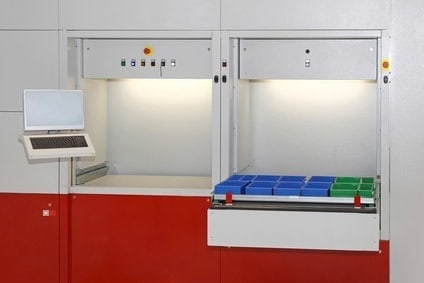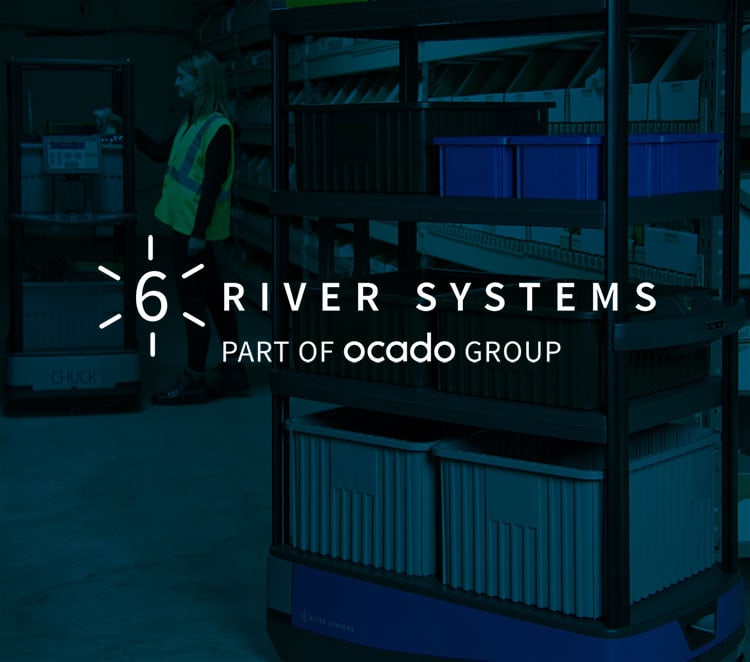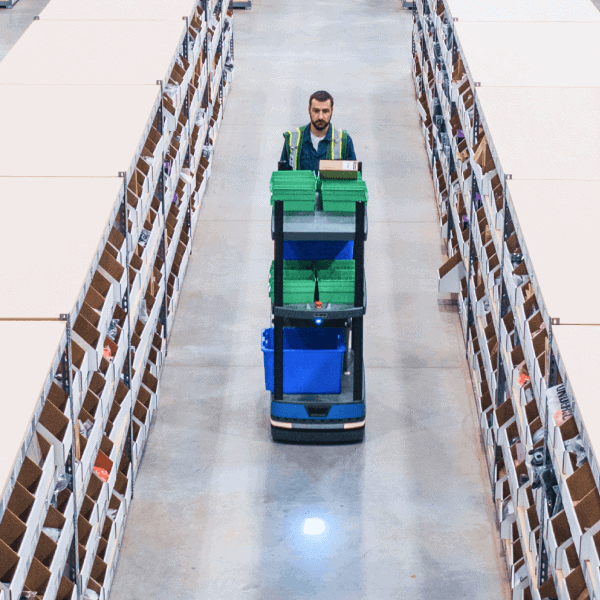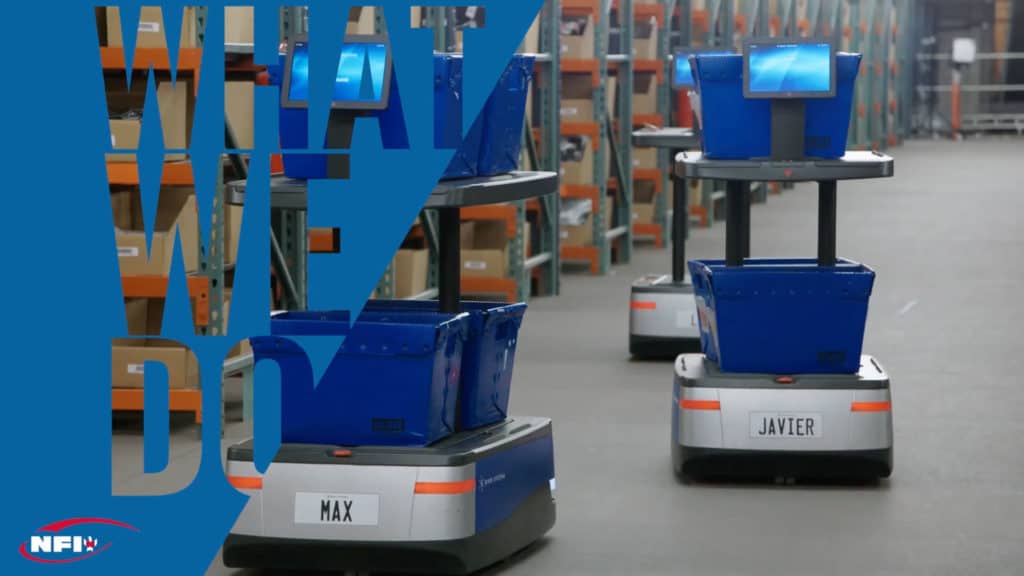Automated storage and retrieval systems (AS/RS) allow companies involved in warehousing and order fulfillment operations to partially or fully automate the handling of materials and inventory functions. They first gained popularity in the 50s and 60s among European, American and Japanese firms. Advancements in technology put the AS/RS industry on track to be worth around $9.8 billion by 2023.
Reasons to adopt an AS/RS system
As more industries look to emerging technologies to automate processes once performed manually, there’s been a renewed interest in automated storage and retrieval systems in the warehouse industry as organizations look for ways to lower overhead costs, improve order picking accuracy and efficiency and reduce errors. 
While the upfront investment in AS/RS can be high, as much as $400K a user, these systems are meant to last for many years. Often, the automated storage and retrieval system cost savings and efficiency gains made possible by AS/RS enable companies to pay off the investment in five to ten years, leaving the opportunity to realize a return on investment in future years.
Automated storage and retrieval systems are not for everyone. If there is a chance of business or product change in the future some operators can be reluctant to bolt a system into the ground that takes months or years to implement, can not be easily changed, and sits idle outside of peak.
Overall, automated storage and retrieval systems offer good quality control and often result in less damage to inventory. Some versions eliminate the need for creating staged orders by allowing items to be retrieved and shipped as soon as an order gets placed without the need for manual order picking.
Other benefits of AS/RS include:
- While Very Narrow Aisle (VNA) racking is the most efficient use of floor space for storage (cu/ft per sq/ft). AS/RS does a good job with efficiently using available floor space
- Minimizes additional labor needs
- Enforces accountability on different departments
- Reduces order picking time
- Enhances product security
Let’s explore the different types of AS/RS systems currently used within the industry.
Unit-load automated storage and retrieval systems
These systems take larger loads of up to 5,500 pounds and place them on pallets or within containers of that size made of wood, plastic or industrial metal. They feature one or more narrow aisles of storage rack structures capable of reaching heights exceeding 100 feet. Software feeds the machine instructions dictating where and how items are placed, removed or relocated.
Other benefits of unit-load AS/RS include:
- Allows for stable and fast transport of goods to and from of high-density storage
- Capable of handling multiple load types, including roll cages and larger items
- Low energy requirements for operation
There are two main types of unit-load AS/RS, including:
Fixed aisle – These systems arrange pallet racks or containers with narrow rows between them. You’ll see cranes fixed to a single row of pallets going up vertically or horizontally to add or remove items.
Moveable aisle – Cranes move between multiple aisles of pallets instead of a single aisle. This makes them very versatile and covers more working space.
Mini-load automated storage and retrieval systems
Mini-load AS/RS systems function similarly to unit-load machines. They handle smaller loads of 1,000 pounds or less and store cartons, totes and storage trays instead of large containers and pallets.
Other benefits of mini-load AS/RS include:
- Minimal learning curve for operation
- More space-efficient
- Enhanced goods security
- Designed for optimal ergonomic operator use
- Usually operates at multiple speeds
There are several specific types of automated storage and retrieval systems under the umbrella of mini-load AS/RS:
Micro-load – These units range in size from six to 72 feet, allowing for placement in existing buildings or worked into the design for new construction. Using a storage rack structure with this AS/RS system eliminates the need for using building columns.
Other micro-load AS/RS features:
- Can be outfitted with various load handlers
- Only views items needing selecting at the moment
- Great for working with goods-to-person order fulfillment systems
Mini-load shuttles – These systems handle packages of 100 pounds or less and require only 5% of the energy of a crane. Their ability to maneuver in smaller spaces allows them to complete up to five times the number of cycles per aisle.
Other mini-load shuttle AS/RS features:
- Great for sequencing buffering between operations with different timing sequences
- Allows you to build mixed-case pallets
- Lets you create sequenced product releases to optimized truck patterns for more efficient delivery
Vertical lift modules (VLMs) – This module consists of tray columns at its front and back. It also has a centered inserter/extractor for storing and retrieving trays. Companies can maximize storage space by choosing to place storage trays in either fixed or dynamic positions.
Other vertical lift module (VLM) features:
- Can combine multiple units into pods for multi-tasking with other units
- Takes up minimal floor space
- Allows for dynamic storage capabilities
Horizontal carousel – Horizontal carousels are made up of a series of bins rotating horizontally along a track, similar to a merry-go-round. Operators input instructions telling the system which positions to rotate into for item retrieval.
Other horizontal carousel features:
- Lower costs compared to some other robotic systems
- Eliminates wasted space
- Efficiently stores materials between processing steps
Vertical carousel – These systems differ from horizontal carousels in that they rotate like a ferris wheel. They’re great for handling small, fast-moving items. Vertical carousels are typically used for handling documents, tooling or storing raw materials.
Other vertical carousel features:
- Maximizes warehouse space
- Achieves high throughput rates
- Reliable and cost-effective
Introducing Collaborative Robots: a new, more efficient alternative to AS/RS for the modern warehouse
One business area ripe for business process disruption enabled by robotics is supply chain execution, especially in order fulfillment processes in the warehouse. These processes typically involve a high degree of human involvement as well as a tremendous amount of movement throughout a facility. It’s widely agreed that 70% of warehouse costs are labor and 70% of that is people walking items around. The walking part is between picking and shipping and involves pushing (often heavy) carts to go to a predetermined location. Beyond that, much of the walking is inefficient as its between aisles looking for items 1 by 1.
Collaborative mobile robots that uses powerful cloud-based software, machine learning, and AI to get smarter and more efficient as they work have emerged in the last few years as a warehouse automation solution that can deliver 80% of automated storage and retrieval system benefit at 20% of the cost.
Collaborative mobile robots are human-centered alternatives to AS/RS that lead operators through their workflow, working alongside the tools and systems you’re already using — including your warehouse management system. Robots transport work across the warehouse to and from associates, reducing foot traffic throughout the facility and dramatically enhancing accuracy and efficiency.
Through the use of machine learning and AI, work is prioritized and assigned to associates automatically to optimize resource utilization and enhance productivity. Some collaborative robots use sensors to navigate throughout the facility, meaning no new infrastructure is required for implementation.
Other benefits of collaborative mobile robots:
- Can be used on all types of warehouse floors
- Can be used in all picking, sorting, counting and replenishment tasks
- Instantaneous new associate onboarding
- Two- to three-fold increase in in-aisle rates
Incorporating automated storage and retrieval systems
Look for the system best suited to the types of products you handle on a daily basis. Consider combining different AS/RS systems with mobile robots if you handle a variety of inventory types. Take the size of your warehouse into account and the number of staff needed to effectively run and maintain these systems. The ROI resulting from cost savings and more efficient space utilization can reduce overhead costs and help organizations reach revenue goals.



